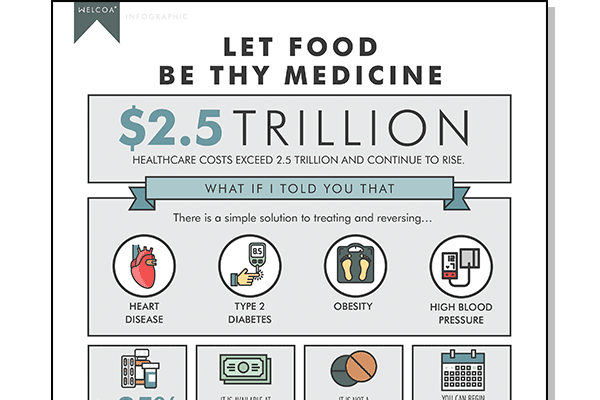During the COVID-19 pandemic, people spent a lot of time isolated and indoors, which helped foster an environment where some people now feel lonelier than ever. The result is a loss of social connectedness—the degree to which people feel the social connections and relationships in their lives to satisfy their wants and needs. When social…
Your Welcoa membership has expired.
The 5 Essential Elements to Inspire Wellness Through Supportive Cultures
Traditional wellness programs have focused primarily on improving biometric markers among participants. While it is undeniable that our industry has done great work to improve health, this approach has yielded low program participation, questionable long-term gains and can be costly to implement. Fortunately, health promotion programs have begun to evolve toward a more holistic approach.
A New Model for Building Supportive Cultures
When building a supportive culture within your workplace, what element should be embedded into every aspect of the organization? Wellness.
In order to create a markable impact on our employees, we have to move people from surviving to thriving. How do we get people to thrive in their health goals? Moving beyond broccoli and sweat, there are other components of health and well-being. An acronym, created by Vic Stretcher from the University of Michigan, called SPACE represents the five elements for living a healthy life. SPACE is a way to build energy and willpower within individuals.
SLEEP
Are you sleeping well? We spend so much time plugged in to our late night emails, social media, and other device application that it’s effecting our sleep patterns in a major way. The reality is, we really haven’t unplugged ourselves when we lay down to sleep. So what can we do to start thinking differently about sleep?
- Place your devices in another room before you go to bed
- Create awareness about your surroundings
- Turn off your cell phone, tablets, TVs, computers at night
Ultimately a happy, healthy life begins with a good night’s sleep. Sleep should be a primary focus for you as an individual, but also make sure you are looking at your organization and educating your employees on the strategies for good sleep.
PRESENCE
There is some interesting and fascinating research about the importance of presence. Presence is known by many names. Such as mindfulness, which has to do with meditation, gratitude moments, and spacial awareness. Meditation can have an impact on our telomere length, which is a component of our DNA. Your mind shouldn’t be full. Presence can be a really powerful way to reshape and restart your mindset.
- Try pausing before you eat to take in the smells, visuals and even sounds of your food
- Before a big meeting, take a moment to close your eyes and breathe deeply for several seconds
- Before bed, take a moment to sit at the edge of your bed and give thanks for your accomplishments of the day
How are you helping your employees be more present in their jobs? Are you looking at stress management? Or strategies for coping? Many of these tactics are all about being more present. In relationships, at your job, when you’re eating food; it can be very tempting and fairly easy to operate on autopilot.
ACTIVITY
The idea here is that we have to build more activity into our work day. This is not a suggestion of encouraging your employees to all start running marathons. Being healthy really is about movement. We’ve got to get people moving more throughout the day. Here are some simple ways to get started.
- Take a lap around the office or your building
- Get up and stretch every 1-2 hours
- Explore treadmill walking stations and stand-up desks
Ask yourself, “how am I helping my employees get moving at work?” A lot of the devices we have now remind us to simply get up. Activity during the working hours of the day is really more of a cultural barrier, in that we have that if employees are working out during work or doing stretches at their desk, it’s frowned upon. By encouraging your employees to move with the simple steps above you can begin to shift the perspective and ultimately your organization’s culture.
CREATIVITY
There has been a lot of research that talks about the importance of creativity. We all grow up as children and when we think about children, they are playing with blocks, bugs, and in the grass. As we get more institutionalized, we have less and less opportunity to express ourselves. This doesn’t mean that we have to pick up a brush and start painting a picture. But, how can we build more creativity into what we do? Here are some alternative creative outlets:
- Attempt a cooking challenge; food is a great way to bring people together
- Join a knitting, gardening, or craft club
- Volunteer for a local animal shelter or other charitable programs of interest
While these don’t sound like typically healthy activities, sharing talents with others can be a really powerful way to connect a group. And we need to carve out time to get creative. If you can leverage creativity in your people, you are opening up opportunity for people to express themselves.
EATING
There is not one best diet. Dan Buettner was challenged to travel around the world and study pockets of various civilizations that had the highest number of people who lived to be over 100 years old. He found five Blue Zones around the world, and they had a lot in common as they pertained to diet. The one thing in common with all of them was that they ate whole foods. Some ideas to consider to help bring this to the workplace include:
- Earth to mouth: Provide education about sustainable practices and include them in your cafeteria
- Ocean/Lake to mouth: Have a fishing day for families
- Bring a community supported agriculture (CSA) to your organization
- Explore local farmer’s markets: Provide a list to your employees
The farm to table movement is beautiful. There is a lot of education out there. We have to start thinking about taking food and helping people understand how to eat right and how to do it at work and with their families.
“Let food be thy medicine, and medicine be thy food” — Hippocrates
So think about SPACE the next time you approach your wellness initiatives. These five dimensions will not only help you and your employees live a healthier life but really drive purpose in your organization.

Let Food Be Thy Medicine
One positive practice that improves the energy and willpower of your employees is Eating. Learn how some physicians are using whole food plant-based diets to reverse heart disease and other chronic conditions in their patient populations.

[Free Assessment]
Workplace Wellness Program Assessment
The Well Workplace Checklist is an interactive workplace wellness program assessment that measures your organization’s alignment with WELCOA’s Seven Benchmarks for designing strategic initiatives and supportive climates for wellness.




